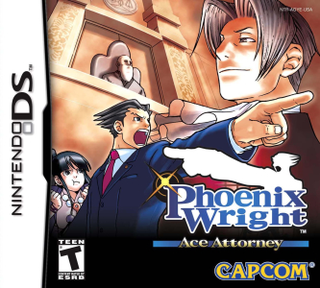
Phoenix Wright: Ace Attorney is a visual novel adventure game developed and published by Capcom. It was released in 2001 for the Game Boy Advance in Japan and has been ported to multiple platforms. The 2005 Nintendo DS version, titled Gyakuten Saiban Yomigaeru Gyakuten in Japan, introduced an English language option, and was the first time the game was released in North America and Europe. It is the first entry in the Ace Attorney series; several sequels and spin-offs were produced, while this game has seen further ports and remasters for computers, game consoles, and mobile devices.
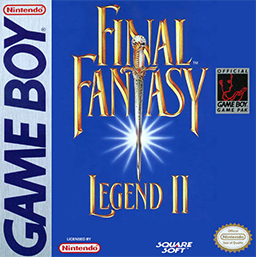
Final Fantasy Legend II, known in Japan as SaGa 2: Hihou Densetsu, is a role-playing video game developed and published by Square for the Game Boy. The second entry in the SaGa series, it was released in 1990 in Japan, and in 1991 in North America. A later edition was released in North America in 1998 through Sunsoft. A remake for the Nintendo DS was released in 2009 by Square Enix, remaining exclusive to Japan. The Game Boy version was later ported to the Nintendo Switch and released worldwide by Square Enix in 2020, with later ports to Android, iOS and Microsoft Windows in 2021.
Neverland Company Inc. was a Japanese video game developer founded on May 7, 1993. It has developed games for Super NES, Dreamcast, GameCube, PlayStation 2, Game Boy Color, Nintendo DS, Nintendo 3DS, PlayStation Portable, PlayStation 3 and the Wii. The most notable games this company developed were part of the Lufia and Rune Factory series of video games. In November 2013, the company announced that it would cease operations and file for bankruptcy. The following year, many former members of the studio were hired by Marvelous, who had published many of their previous games.
Hanjuku Hero is a Japan-exclusive series of real-time strategy video games. It is directed by Takashi Tokita and published by Square Enix. The series contains four main titles and a spin-off game. The main titles are Hanjuku Hero (1988), Hanjuku Hero: Aa, Sekaiyo Hanjukunare...! (1992), Hanjuku Hero Tai 3D (2003), and Hanjuku Hero 4: 7-Nin no Hanjuku Hero (2005). The spin-off is a Nintendo DS game called Egg Monster Hero (2005), which is a role-playing game with an emphasis on touch-based gameplay. The series is known for its humor and is centered on Lord Almamoon, the protagonist who must save his country from danger in each game.

Contact is a role-playing video game developed by Grasshopper Manufacture for the Nintendo DS handheld game console. It was published by Marvelous Entertainment in Japan on March 30, 2006, by Atlus USA in North America on October 19, and by Rising Star Games in Australia, Asia and Europe on January 25, 2007 and February 2, respectively.
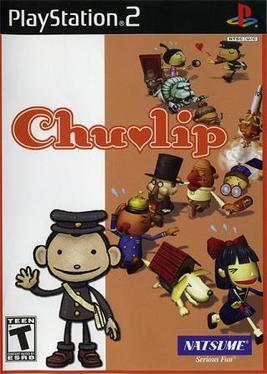
Chulip (チュウリップ), stylized as Chu♥lip, is an adventure/simulation video game developed by Punchline and released on October 3, 2002 in Japan by Victor Interactive Software for the PlayStation 2. After numerous delays, the game was released in North America by Natsume on February 13, 2007 as a GameStop-exclusive title. It was released on the PlayStation Network as a "PS2 Classic" on December 4, 2012, exclusively in North America.
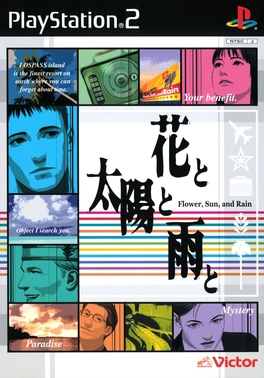
Flower, Sun, and Rain is an adventure video game developed by Grasshopper Manufacture and published by Victor Interactive Software for the PlayStation 2 in 2001. It was initially only released in Japan. A port for the Nintendo DS (DS) was developed by h.a.n.d. under supervision by Grasshopper Manufacture. It was published by Marvelous Entertainment in Japan (2008) and North America (2009) and Rising Star Games in Europe (2008).

Trauma Center: Under the Knife 2 is a 2008 simulation video game developed by Vanguard for the Nintendo DS (DS), and published by Atlus. It is the fourth game in the Trauma Center series and a direct sequel to Trauma Center: Under the Knife (2005). Set three years after the events of Under the Knife, the plot follows protagonist Derek Stiles as he confronts not only the revival of terrorist organisation Delphi and its GUILT disease, but personal insecurities and corporate manipulation. The gameplay combines surgical simulation relying on the DS's touchscreen controls with a story told as a visual novel.
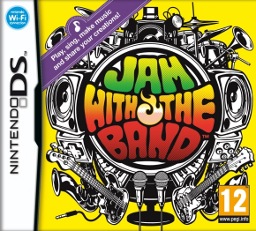
Jam with the Band, known in Japan as Daigasso! Band Brothers DX, is a music video game developed and published by Nintendo for the Nintendo DS handheld game console. It is the sequel to the Japan-exclusive Daigasso! Band Brothers, which was released at the DS' launch. Jam with the Band was released in Japan in June 2008 and in Europe in May 2010. It uses the largest save capacity for a Nintendo DS game at eight megabytes. Its release was accompanied by a Wii Channel for the Wii console called the Live Channel, known in Japan as the Speaker Channel, that allows players to hear the game's sound through their television. It features the character Barbara Bat, who was also in the predecessor.
Akira Ueda is a Japanese video game designer, director, graphical artist, and composer. After previously working for several notable companies, he currently designs games from his own company Audio, Inc.

Blood of Bahamut is an action role-playing video game developed by Think & Feel and published by Square Enix. It was released for the Nintendo DS in Japan on August 6, 2009.

Theatrhythm Final Fantasy is a rhythm video game, developed by indieszero and published by Square Enix for Nintendo 3DS and iOS. Based on the Final Fantasy video game franchise, the game involves using the touch screen in time to various pieces of music from the series. The game was released in Japan in February 2012, and in North America, Australia and Europe in July. An iOS version was released in December. A sequel, Theatrhythm Final Fantasy: Curtain Call, was released in 2014. A third game based on the Dragon Quest series, Theatrhythm Dragon Quest, was released in 2015. An arcade game, Theatrhythm Final Fantasy: All-Star Carnival, was released in 2016. A second sequel, Theatrhythm Final Bar Line, was released on February 16, 2023 for Nintendo Switch and PlayStation 4.
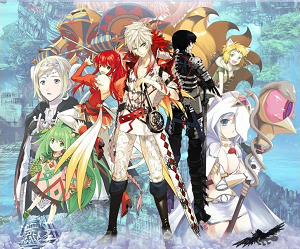
Unchained Blades, titled UnchainBlades ReXX in Japan, is a 2011 dungeon crawler role-playing video game developed by FuRyu and published by Xseed Games for the Nintendo 3DS and PlayStation Portable.

Ragnarok Odyssey is a role-playing video game for the PlayStation Vita system. It is based on the universe of the MMORPG Ragnarok Online, containing many elements of Norse mythology. It was released in February 2012 within Japan, August 21, 2012 in South Korea, October 30, 2012 in North America and February 20, 2013 in Europe. An updated version titled Ragnarok Odyssey Ace has been released on PlayStation Vita and PlayStation 3.

Cry On was a cancelled action role-playing game in development by Mistwalker and Cavia for Xbox 360. Mistwalker founder Hironobu Sakaguchi acted as co-producer and writer, Drakengard artist Kimihiko Fujisaka was designing the characters, and composer Nobuo Uematsu was attached to the project. From 2007 onwards, artwork was redesigned by Manabu Kusunoki.
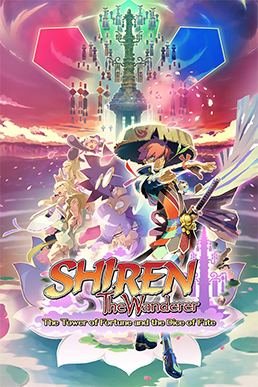
Shiren the Wanderer: The Tower of Fortune and the Dice of Fate is a roguelike role-playing video game developed by Chunsoft. It is the fifth main entry in the Shiren the Wanderer series, which is a subset of the larger Mystery Dungeon series. It was originally released for the Nintendo DS in 2010 in Japan.

Shiren the Wanderer 4: The Eye of God and the Devil's Navel is a role-playing video game developed by Chunsoft and published by Spike. It is the fourth main entry in the Shiren the Wanderer series, which itself is a part of the larger Mystery Dungeon series. The game was originally released for the Nintendo DS in 2010; an expanded port was released for the PlayStation Portable in 2012 entitled Mystery Dungeon: Shiren the Wanderer 4 Plus: The Eye of God and the Devil's Navel.

Shiren the Wanderer GB2: Magic Castle of the Desert is a roguelike role-playing video game developed by Chunsoft. It is part of the Mystery Dungeon series, and is a sequel to Shiren the Wanderer GB: Monster of Moonlight Village. It was originally released for the Game Boy Color by Chunsoft in 2001. A Nintendo DS remake was released by Sega later in 2008.















